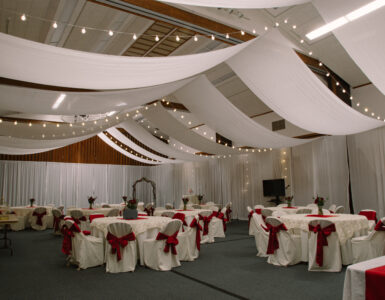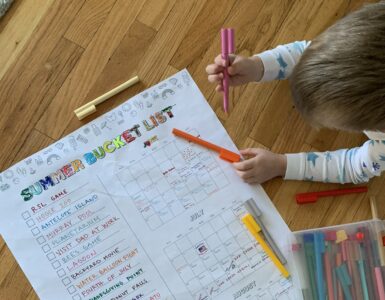Nick Furman, with the Oregon dungeness Crab Commission, makes a visit to Studio 5 and talks about this great treat for seafood lovers.
Q – What makes Dungeness different than other crabs?
A -Dungeness are a ‘meaty’ crab – i.e. 25+ % ‘meat to shell’ ratio vs 13%+- for blue crab. Only the claw of the stone crab is harvested and sold. The rest of the crab is returned to the water to regenerate a new claw. The shell of the Dungeness is thinner than a king or stone crab, and easier to crack. Dungeness can be purchased live and ‘fresh’, where king and snow crab are only sold as frozen products. Dungeness are only found in a narrow band up the West Coast to Alaska. Blue, king and snow are found in many oceans around the world. The Blue crab is a swimming crab and its back legs are paddle-shaped. Dungeness crab ‘walk’ and don’t swim…
Q – Whats the best time of year to buy?
A – Peak landings occur in the winter months when the crabs have achieved their maximum ‘fullness’. The harvest season begins in December and goes through mid-August, but up to 80% of the total annual production occurs in the first 8 weeks of the season. Modern freezing technology allows Oregon Dungeness to be available year-round in ‘fresh-frozen’ market forms as well…
Q – Where are they caught?
A – Dungeness are harvested from central CA to the Gulf of Alaska (CA, OR, WA., B.C. & AK). ‘Oregon Dungeness’ are only harvested in Oregon. They are found in the near-shore waters along the sandy-bottom coastline out to about 80 fathoms (480 ft) of water. Oregon ranks at the top of the ‘annual lbs. harvested’ list with WA-state – some years OR is number 1; some years WA gets the title – followed by CA, B.C. and AK…
Q – What types of flavors go well with Dungeness?
A – Dungeness has a ‘stand alone’ flavor and doesn’t need spices to be enjoyable. We don’t cook our crabs in ‘Old Bay Seasoning’ like they do on the East Coast. If you want more than a dab of melted butter to dip Dungeness in, a light seafood sauce works well, but you don’t want to ‘overpower’ the sweet, delicate flavor with too much of anything… Dungeness can be accompanied by pasta and an alfredo-type sauce; it works well in a chowder-type soup and can be folded in to egg-based dishes…
Dungeness have eight legs and two claws. They walk in a sideways or backward motion/direction, and have been known to travel upwards of 100 mi. in search of food and good ocean conditions…
Q – Describe the meat flavor?
A – ‘Sweet’ and firm are the most common descriptions. ‘Delicate’ is also used to describe the flavor…
Q – How do you ‘portion’; how expensive; how is it sold?
A – Dungeness comes as a ‘whole-cook’; a ‘section’ (cooked, back off, cleaned); ‘snap & eat’ (single leg, scored to crack easy); and picked meat (100% edible, no shell). Dungeness is typically priced somewhere between King crab (lower) and snow crab (higher), and is ‘price-sensitive’ base on the market forces of ‘supply & demand’. Price tends to go up throughout the year as the harvest/production declines. Dungeness is available ‘live’, fresh-cooked, and ‘fresh-frozen’ in a variety or market forms…
Q – How long can a live crab be kept in a live tank?
A – Stores that carry live Dungeness anticipate a quick turn-over so weight-loss is not an issue. They aren’t fed in tanks because the ‘waste’ will foul the water so the best method is to just move them quickly. Because they live in cold salt water, they can only survive in refrigerated, salt water tanks. They will die in fresh water. They ‘breath’ through gills, like fish. They can survive out-of-water for over 24 hours if kept damp and cool. They are not as ‘hearty’ as a lobster or a blue crab in that department, and live shipping takes special handling…
Q – Are there ‘grades’ of Dungeness crab?
A – Fresh whole-cooks are sold ‘ocean run’. What comes off the boats gets cooked and shipped out. Frozen crab are ‘size graded’ in ½ lb increments (i.e. 1.5 to 2; 2 to 2.5; 2.5-up)
Q – What is the frozen ‘shelf life’ of crab?
A – That depends on how well it has been handled, how consistent the holding temp. has been, how good were they when they were frozen, etc. There are lots of variables. Commercially, processing plants can hold well-glazed crabs in the shell for months and maintain good quality. They freeze whole crab in a salt brine to help protect the meat during storage. From a consumer standpoint, eat & enjoy soon after purchase because unlike fine wine, crab doesn’t get better with age…
Q – What is better, boiling or steaming?
A – Either cooking method works fine and is a matter of personal preference. Cooking times vary depending of how many crabs are being cooked, are they whole or sectioned, etc…
Q – Odor?
A – As with most fresh seafood, there should be no perceptible odor to a whole crab and certainly no ammonia smell to it or fresh-picked meat. When buying whole crab, make sure that the crab is ‘full’ and that it has some heft to it when you pick it up. When it feels ‘light’, it means it is not full of meat and was harvested too soon after the summertime ‘molt’ when they shed their shells to increase in size. At that stage, the shell is soft and there is very little meat in the shell…
To find Dungeness crab in Utah, visit the Gastronomy restaurants. For more information, go to www.gastronomyinc.com















Add comment